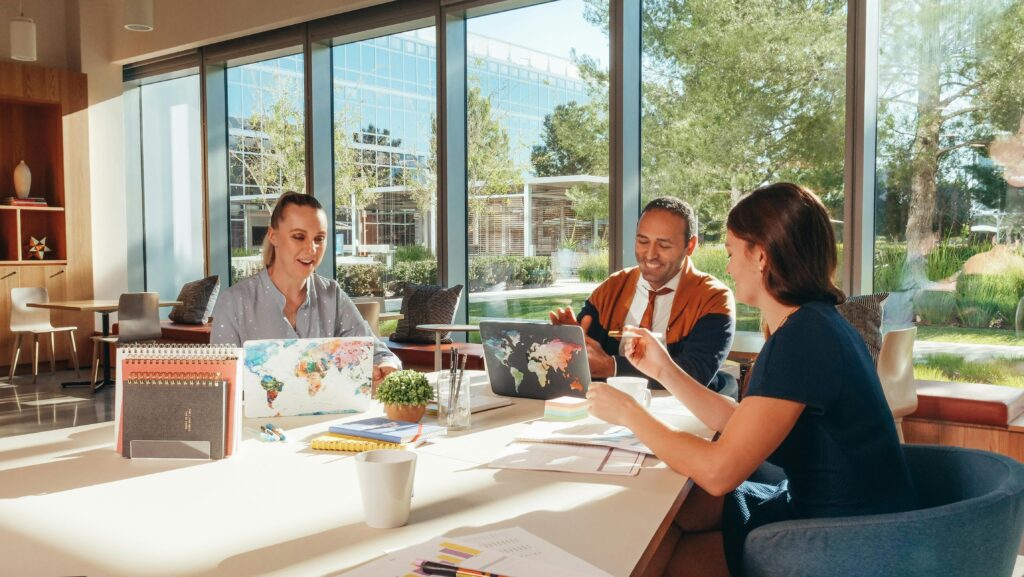Creating Positive Workspaces with Psychological Insights
The workplace is more than just a physical location where tasks are completed; it’s an environment that plays a significant role in employees’ mental well-being, productivity, and overall job satisfaction. Leveraging psychological insights to create positive workspaces can lead to a healthier, happier, and more engaged workforce. Here’s how organisations can achieve this by incorporating principles from psychology into their workplace design and culture.
Psychological studies highlight the importance of open and transparent communication in reducing workplace stress and creating trust. Employees should feel comfortable voicing their ideas, concerns, and feedback without fear of judgment or retaliation. Regular check-ins, open-door policies, and anonymous feedback channels can help build a culture of trust and mutual respect.
Autonomy is a key factor in employee motivation, as outlined by self-determination theory. When employees can decide about their work and how they accomplish tasks, they are more likely to feel competent and fulfilled. Offering flexible work hours, remote work options, and opportunities for self-directed projects can enhance their sense of autonomy.
A positive workspace prioritises physical and mental well-being. This could include providing ergonomic furniture, natural lighting, quiet zones for focused work, and access to wellness programs such as mindfulness workshops or mental health resources. Encouraging breaks and promoting work-life balance can reduce burnout and improve overall morale.
Humans are inherently social beings who thrive in environments where they feel a sense of belonging. Organisations can foster this by creating a culture of inclusion, celebrating diversity, and encouraging team-building activities. Recognising employees’ contributions and celebrating milestones can further strengthen bonds within teams.
The physical workspace itself can have a profound impact on employees’ behaviour and mood. Research shows that spaces with natural light, plants, and calming colours can reduce stress and enhance focus. Different zones for collaboration, relaxation, and focused work allow employees to choose environments that best suit their needs.
Employees are more likely to feel satisfied and motivated when they see personal and professional development opportunities. Employers can support growth by offering training programs, mentoring, and clear pathways for career advancement. This benefits the individual and contributes to the organisation’s long-term success.
Positive reinforcement is a fundamental psychological principle that can be applied in the workplace. Recognising employee achievements and rewarding efforts can boost morale and encourage continued excellence. Whether through verbal praise, monetary bonuses, or public acknowledgement, showing appreciation goes a long way.
Workplace stress and conflict are inevitable, but how they are managed can make a significant difference. Providing resources for psychological consultation to support employees in navigating challenges. Training managers in conflict resolution techniques also ensures that disputes are addressed constructively.
Creating a positive workspace is not just about aesthetics or perks; it’s about understanding and addressing employees’ psychological needs. Organisations can foster a culture of respect, collaboration, and growth to create environments where employees feel valued and empowered. When people thrive, so does the organisation, making the investment in positive workspaces a win-win for everyone involved.



Leave a Reply